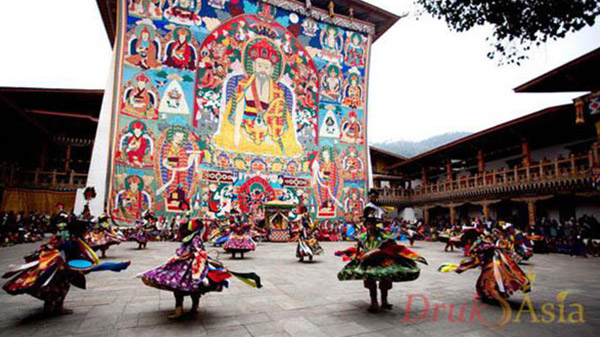Festival Date: 28th February 2017
Every year, the Bhutanese hold the Punakha Tshechu Festival in honour of Padmasambhawa, the precious yogi and saint who introduced Tantric Buddhism to the people of the Himalayas.
Get a first-hand experience of Bhutan’s living history, masked dancers, and ancient traditions.
Itinerary
Punakha Tshechu, as all Tshechu festivals, honors Padmasambhawa, also known as Guru Rimpoche, the precious yogi and saint who is credited with having introduced Tantric Buddhism throughout the Himalayas. The festival’s masked dances are performed by monks clad in colorful brocade attire and permeated by chants and reading of Buddhist scripts. The culmination of festival constitutes the unfolding of a huge cloth thangka, a sacred scroll, depicting Padmasmabhawa and imagery from Buddhist pantheon.
Day 1: Arrival in Paro, Bhutan
Welcome to Bhutan, the Land of the Thunder Dragon.Touching down at Paro International Airport, you will be greeted by your guide upon exiting the arrival hall. Today, we will take it easy to acclimatise to the altitude. Drive to Thimphu, check in to the hotel and lets have your first taste of Bhutanese cuisine and some light sight-seeing, like the weekend market, in Thimphu.
Heritage Museum – Dedicated to connecting people to the Bhutanese rural past though exhibition of artefacts used in rural households.
Textile Museum – witnesses the art of traditional weaving.
Simtokha Dzong – Five miles from Thimphu, on a lofty ridge, stands Semtokha Dzong the oldest fortress in the Kingdom.
Hotels:
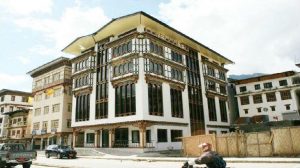 Kisa Hotel |
 Jumolhari Hotel |
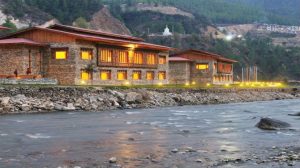 Terma Linca Resort |
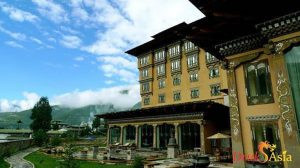 Taj Tashi Thimphu |
Day 2: Tour of Thimphu
National Memorial Chorten – Which was built in honor of the late King Jigme Dorji Wangchuk.
Papermaking Factory – Witnesses the art of papermaking.
Day Trek to Tango Goemba and picnic/lunch by river In the afternoon. The Tango Goemba site has had religious significance since the 12th century when it was the home of the Lama who brought the Drukpa Kagyupa school of Buddhism to Bhutan. The monastery was built there in the 15th century by Drukpa Kunley (“The Divine Madman”). Tango is the highest center of Buddhist learning in the country; almost every Je Khenpo (religious head of Bhutan) completed the 9-year program there. After completing that program, monks traditionally spend 3 years, 3 months and 3 days in mediation at the nearby Cheri Goemba retreat, built in 1619 by Shabdrung Ngawang Namgyal, the founder or first unifier of Bhutan. It is currently the home of an 11-year-old boy believed to be the seventh reincarnation of the fourth desi, or ruler, of Bhutan.
Centenary Farmers’ Market – Every Saturday and Sunday most of the Thimphu population congregate on the banks of the river where the weekend market is held. Here villagers from the valley and other nearby places come to sell their agriculture products.
Hotels:
 Kisa Hotel |
 Jumolhari Hotel |
 Terma Linca Resort |
 Taj Tashi Thimphu |
Day 3: Punakha Tshechu
Punakha Dzong – Built in 1637, the dzong continues to be the winter home for the clergy, headed by the Chief Abbott, the Je Khenpo. It is a stunning example of Bhutanese architecture, sitting at the fork of two rivers, portraying the image of a medieval city from a distance. The dzong was destroyed by fire and glacial floods over the years but has been carefully restored and is, today, a fine example of Bhutanese craftsmanship.
The Punakha Tshechu, as all Tshechu festivals, honors Padma Sambhawa, also known as Guru Rimpoche, the precious yogi and saint who is credited with having introduced Tantric Buddhism throughout the Himalayas. The festival’s masked dances are performed by monks clad in colorful brocade attire and permeated by chants and reading of Buddhist scripts. The culmination of festival constitutes the unfolding of a huge cloth thangka, a sacred scroll, depicting Padma Smabhawa and imagery from Buddhist pantheon.
Khamsum Yulley Namgyal Chorten – Built by the third Queen Mother Ashi Tshering Yangdon wangchuck this Chorten is a splendid example of of the Bhutanese architecture and art and is the only one of its kind in the world. It has been built over eight and a half years and its details have been drawn from religious scripture.
Hotels:
 Meri Puensum |
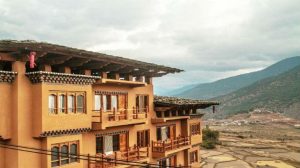 Hotel Lobesa |
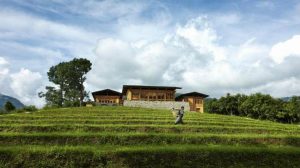 Uma Punakha |
Day 4: Punakha
Punakha Dzong – Built in 1637, the dzong continues to be the winter home for the clergy, headed by the Chief Abbott, the Je Khenpo. It is a stunning example of Bhutanese architecture, sitting at the fork of two rivers, portraying the image of a medieval city from a distance. The dzong was destroyed by fire and glacial floods over the years but has been carefully restored and is, today, a fine example of Bhutanese craftsmanship.
The Punakha Tshechu, as all Tshechu festivals, honors Padma Sambhawa, also known as Guru Rimpoche, the precious yogi and saint who is credited with having introduced Tantric Buddhism throughout the Himalayas. The festival’s masked dances are performed by monks clad in colorful brocade attire and permeated by chants and reading of Buddhist scripts. The culmination of festival constitutes the unfolding of a huge cloth thangka, a sacred scroll, depicting Padma Smabhawa and imagery from Buddhist pantheon.
Khamsum Yulley Namgyal Chorten – Built by the third Queen Mother Ashi Tshering Yangdon wangchuck this Chorten is a splendid example of of the Bhutanese architecture and art and is the only one of its kind in the world. It has been built over eight and a half years and its details have been drawn from religious scripture.
Hotels:
 Meri Puensum |
 Hotel Lobesa |
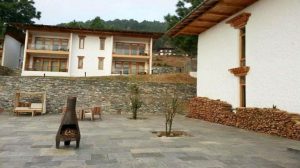 Dhensa Boutique Resorts |
 Uma Punakha |
Day 5: Punakha to Paro
Chhimi Lhakhang – A 20 minutes walk across terraced fields through the village of Sopsokha from the roadside to the small temple located on a hillock in the centre of the valley below Metshina. Ngawang Chogyel built the temple in 15th century after the ’divine Madman’ Drukpa Kuenlay built a small chorten there. It is a pilgrim site for barren women. Paro Valley – The beautiful valley is home to many of Bhutan’s old monasteries and temples. The country’s only Airport is in Paro. The valley is also home to mount Chomolhari (7,300 meters) situated at the northern end of the valley whose glacier water forms the Pachu flowing through the valley. The following are some of the prominent places to visit in Paro. Paro Dzong also known as Rinpung Dzong, this 15th century massive fortress/monastery, is also the administrative center of the dzonkhag. A morning drive, north of Paro valley brings us to the ruins of Drukgyal Dzong. Built in 1647 by the great Shabdrung Ngawang Namgyal, father and unifier of medieval Bhutan, the Dzong was destroyed by an accidental fire and left in ruins as an evocative reminder of the great victories it was built to commemorate.Explore the ramparts and relive the memories of a glorious past.
Hotels:
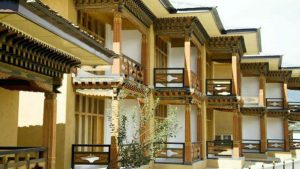 Tenzinling Resort |
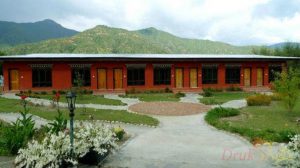 Metta Resort & Spa |
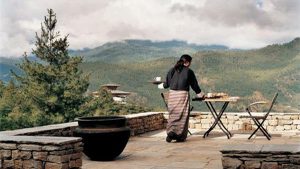 Uma Paro |
Day 6: Paro
Drukgyal Dzong – A morning drive, north of Paro valley brings us to the ruins of Drukgyal Dzong. Built in 1647 by the great Shabdrung Ngawang Namgyal, father and unifier of medieval Bhutan, the Dzong was destroyed by an accidental fire and left in ruins as an evocative reminder of the great victories it was built to commemorate.Explore the ramparts and relive the memories of a glorious past.
Taktsang Monastery – A one hour hike to the cafeteria is also a vantage view whereby you can enjoy the stunning view of the monastery. Prayer flags adorn the cliffs and this is also where Guru Padmasambhava landed on the back of a tigress in the 8th century.
Kyichu Lhakhang – After a sumptuous local lunch, we will retrace our steps to visit Kyichu Lhakhang, one of the oldest temples in Bhutan.
Hotels:
 Tenzinling Resort |
 Metta Resort & Spa |
 Uma Paro |
Day 7: Depart Paro
After breakfast, we will transfer to Paro airport for our flight and we bid a fond farewell to the Kingdom of Bhutan
What’s Included
» Private guided tour
» Visas for Bhutan
» Airport transfers
» Daily 3 meals (B/L/D) at designated restaurants or hotels
» Accommodation at 3 star hotel
» A qualified & licensed English-speaking guide
» An experienced driver
» A tour vehicle
» Entry fees & road permits
» Government fee, royalty, taxes & surcharges
» Mineral bottled water
» Set of traditional costume (to be return at the end of your stay)
» Full service & assistance before, during and after your Bhutan trip
Suitable Months
Festival Date: 28th February 2017 – 6th March 2017 ; 2nd-8th March 2017
Prices
What’s Excluded
» Flight into Bhutan via Drukair (can be arranged with us)
» Flight on other airline to catch Drukair Flight
» Hotel stay outside of Bhutan
» Travel Insurance (can be arranged with us)
» Meals at 4-5 stars restaurants
» Tips for the guide and driver
» Alcoholic drink
» Expenditure of personal nature
Our Guarantee
Guaranteed Visa approval. We have yet to disappoint a single of our travellers in term of Visa issuance.
Your choice of hotels will be confirmed for your inspection before your arrival. We only book you on hotels which we love and would love again.
We will be happy to change your guide, driver or vehicle on the first two days of arrival in Thimphu if you are not satisfied with our selection. Drop us a note and our hospitality team be on the spot to assist you.
We’re here to help. Our world-class member services team is available by phone or email — there’s no automated system or call center; you’ll communicate with a real person.

